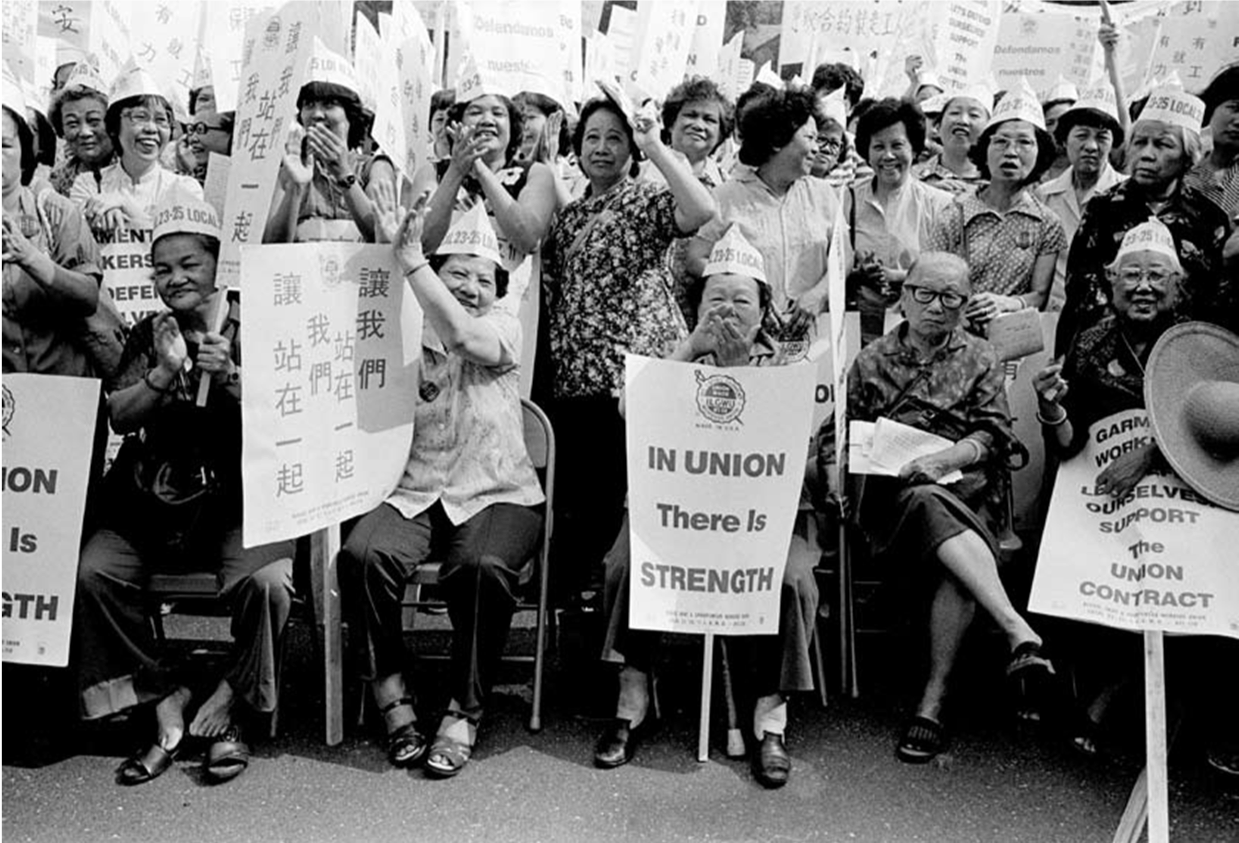
Asian American Women’s History: Schlesinger Exhibit Revealed
Asian American women’s history stands at the intersection of resilience and obscurity, often overshadowed by broader historical narratives. This rich tapestry of women’s stories includes the silent contributions of women who navigated the challenges of cultural erasure and social marginalization, shedding light on their overlooked roles. A shining example of this exploration is the ongoing Schlesinger Library exhibit, which recontextualizes the lives of Asian American women, ensuring their stories are told and recognized. As artifacts from history are brought to the forefront, viewers are invited to confront the complexities surrounding Asian American history and its impact on our understanding of American culture. By examining the past, we honor the significant contributions of Asian American women and challenge the narratives that have long since been forgotten.
Exploring the history of Asian American women reveals a compelling narrative of perseverance and contribution that has been largely neglected. These women’s journeys, often framed as a footnote in the broader arc of American history, reflect the myriad challenges they faced amidst cultural erasure and societal expectations. The recent exhibit at the Schlesinger Library, aptly named “Illuminate,” highlights the essential role of these women and encourages a dialogue about their significance in shaping both Asian American and American heritage. Such efforts not only shine a light on their pivotal stories but also acknowledge the systemic issues that have silenced their voices throughout time. As we reflect on the lives of these trailblazers, we begin to comprehend the profound impact they have had on social, culinary, and political landscapes within the U.S.
Unveiling Asian American Women’s History
Asian American women’s history often remains overlooked, despite their significant contributions to the cultural and social fabric of the United States. The Schlesinger Library’s exhibition, ‘Illuminate: Contextualizing Asian American Women’s Stories Through the Archives’, shines a well-deserved spotlight on these often-invisible narratives. By showcasing artifacts and stories from as far back as the 19th century, the exhibition urges visitors to reconsider the integral role that Asian American women have played in shaping both their communities and broader American history.
One poignant example highlighted in the exhibition is the story of Ah Fong, who, alongside other detained Asian American women, fought legal battles that contributed to landmark Supreme Court decisions. Stories such as hers illustrate the resilience and agency of Asian American women at critical junctures in history, challenging the narrative of cultural erasure that often overshadows their contributions. By revisiting these histories, the exhibit illustrates how these women not only navigated but also influenced the complexities of immigration laws and societal norms throughout American history.
Cultural Erasure and Representation
The exhibition at the Schlesinger Library goes beyond mere archival display; it brings attention to the issue of cultural erasure that has routinely affected Asian and Asian American communities. According to curator Victor Betts, the stories of these women have been pushed to the fringes of historical narratives, often relegated to the margins of society’s collective memory. This cultural erasure fundamentally impacts how we view American history, as it neglects the vital contributions Asian American women have made.
By integrating various media like political posters, comic books, and zines, the exhibition allows a broader representation of Asian American women’s experiences. It dynamically illustrates the intersection of identity and activism, particularly in instances such as the COVID-19 pandemic, where Asian American women were at the forefront of both community service and advocacy against anti-Asian violence. This layered representation not only serves to reclaim the narratives long silenced but also empowers future generations to recognize and elevate their own stories.
Collaborative Historical Research in Action
In a remarkable display of collective scholarship, students at Harvard collaborated with archivists to explore and uncover the histories of Asian American women. The course, co-taught by Betts and renowned historian Erika Lee, exemplifies a model of co-learning that encourages deeper investigation into the archival materials. Students like Christian D. Topinio and Sophia Wang utilized the archives to delve into historical narratives, exemplifying how academic inquiry can drive awareness of marginalized histories.
This hands-on research not only enriches the students’ educational experience but also emphasizes the importance of community engagement in scholarly work. By examining cases like the Ah Fong trial, students not only learn about legal history but also reflect on the societal dynamics that impact their own lives today. As they piece together these stories, they contribute to the broader discourse around Asian American identity, bridging past with present and asserting the relevance of these women’s experiences in contemporary discussions.
The Importance of Archival Preservation
Archival preservation plays a pivotal role in understanding and reclaiming Asian American women’s histories. The Schlesinger Library’s exhibit underscores the necessity for preserving diverse narratives that have often been ignored or misrepresented in traditional historical accounts. Artifacts from the exhibition, including photographs and legal documents, serve as tangible connections to the past, illuminating the voices of those who fought against marginalization and oppression.
Despite ongoing efforts, significant gaps still exist in the collections regarding Asian and Asian American women’s experiences. Yet, as curator Victor Betts notes, this absence is itself an opportunity to reflect on why these gaps exist—prompting discussions on the systemic factors that have led to the ongoing marginalization of these narratives. Expanding the collection is essential, not only for academic purposes but for fostering a more inclusive understanding of American history as a whole.
Artistic Expressions of Asian American Women
Art serves as a powerful medium for Asian American women to assert their identities and reclaim narratives that have been historically sidelined. The inclusion of culturally resonant artworks in the Schlesinger exhibition, particularly those by Taiwanese-American artist Shaina Lu, exemplifies how creativity can illuminate personal and collective histories. Lu’s translucent illustrations allow natural light to filter through, paralleling how these narratives seek visibility amidst the shadows of cultural erasure.
Through her commissioned artwork, Lu captures the essence of Asian American women’s struggles and successes, providing a visual commentary on their roles in both historical and contemporary contexts. Art not only enriches the exhibit but also acts as a catalyst for dialogue about representation, identity, and resilience within Asian American communities. By showcasing these artistic expressions, the exhibit emphasizes the vital contributions of Asian American women to the arts, further reinforcing their significance within American cultural narratives.
Revisiting Asian American Contributions Throughout American History
The contributions of Asian American women to American history are worthy of recognition and celebration. Not only have they played crucial roles in community activism and cultural preservation, but they have also significantly influenced broader social movements. For example, during the Civil Rights era, Asian American women were integral to the fight against discrimination, lending their voices to causes that sought equality and justice for all marginalized communities.
By weaving their stories into the larger tapestry of American history, the Schlesinger exhibit highlights how Asian American women have continually forged paths of resilience and leadership. Celebrating figures like Grace Zia Chu contributes to a deeper understanding of this legacy, reminding us that Asian American history is indeed American history, with rich narratives worthy of inclusion in the national consciousness.
Engaging the Community Through Education
The educational initiatives surrounding the ‘Illuminate’ exhibition underscore the importance of community engagement in preserving and sharing Asian American women’s stories. Through collaborative educational experiences, students are encouraged to think critically about representation, assumptions, and the historical context of Asian American women. Initiatives like these serve to inform future generations about the diverse narratives that comprise the fabric of U.S. history.
Furthermore, by partnering with the community, the Schlesinger Library and academic institutions can work collaboratively to unearth and preserve these vital stories, making them accessible to a broader audience. This access fosters a deeper understanding and appreciation of the varied experiences of Asian American women, reinforcing the notion that their stories are essential to the American narrative as a whole.
The Role of Social Movements in Shaping Histories
The exhibition also highlights how social movements have historically shaped the narratives surrounding Asian American women. From labor rights to anti-war activism, Asian American women have consistently been at the forefront of critical social issues. Their involvement in movements often went unnoticed, overshadowed by mainstream narratives that typically highlight male figures as leaders.
As the exhibit illustrates, these women often used their voices to advocate for rights not just for themselves but for their communities at large. By incorporating stories of activism into the broader historical narrative, the ‘Illuminate’ exhibition challenges visitors to reflect on how these movements have been foundational in shaping not only Asian American identity but American society at large.
Concluding Thoughts on Asian American Women’s Narratives
In conclusion, the ‘Illuminate’ exhibition at the Schlesinger Library is an important step towards reclaiming and celebrating the narratives of Asian American women. By weaving their stories into the broader context of American history, it challenges the narrative of cultural erasure and seeks to highlight their essential contributions to society. As visitors engage with these histories, they are invited to recognize the ongoing relevance of Asian American women’s experiences in today’s sociopolitical climate.
As curator Victor Betts emphasizes, embracing Asian American history as a fundamental aspect of American history enriches our understanding of the nation’s complexities. Through initiatives like this exhibit, scholars, artists, and students alike are empowered to continue this vital work of recognition and advocacy, ensuring that the stories of Asian American women occupy their rightful place in the historical narrative.
Frequently Asked Questions
What is the significance of Asian American women’s history in the context of American history?
Asian American women’s history is crucial as it reflects the wider narrative of American history, showcasing their contributions, struggles, and resilience. Despite being historically marginalized, their stories reveal the intersections of race, gender, and immigration in shaping the United States. Understanding Asian American women’s history enriches our comprehension of America’s diverse cultural landscape.
How does the Schlesinger Library exhibit help illuminate Asian American women’s stories?
The Schlesinger Library exhibit, titled “Illuminate: Contextualizing Asian American Women’s Stories Through the Archives,” sheds light on the often-overlooked contributions of Asian American women. By showcasing artifacts and archives spanning 150 years, the exhibit encourages a reevaluation of historical narratives and emphasizes the importance of preserving these women’s stories for future generations.
What themes are explored in the exhibition regarding Asian American women’s contributions?
The exhibition explores themes such as cultural erasure, visibility, and the legal struggles of Asian American women. It highlights the historical context of Asian American women’s experiences, from the Chinese Exclusion Act to contemporary anti-Asian violence, illustrating their pivotal role in American history and society.
How have Asian American women navigated cultural erasure throughout history?
Asian American women have faced cultural erasure through societal neglect and historical misrepresentation. The exhibition addresses this by presenting their stories and advocating for recognition. By uncovering these narratives, scholars and archivists aim to challenge the dominant historical discourse that often sidelines Asian American women.
What role do academic collaborations play in preserving Asian American women’s histories?
Academic collaborations, like the course co-taught at the Schlesinger Library, foster research that brings Asian American women’s histories to light. Students and scholars work together to analyze archival materials, facilitating a deeper understanding of their contributions and the historical context surrounding them. This approach not only preserves these narratives but also engages new generations in the study of Asian American women’s history.
Who were some notable Asian American women highlighted in the Schlesinger Library exhibit?
The exhibit features various notable Asian American women, including figures like Grace Zia Chu and Madhur Jaffrey, renowned chefs and authors whose contributions to culinary arts reflect the richness of Asian American culture. Additionally, historical figures such as Ah Fong, a Chinese woman involved in a significant 1874 court case, represent the legal challenges faced by Asian American women.
What impact has the COVID-19 pandemic had on the visibility of Asian American women’s stories?
The COVID-19 pandemic has heightened awareness of anti-Asian violence, bringing Asian American women’s stories into the spotlight. The Schlesinger Library exhibit addresses this contemporary issue by placing it alongside historical injustices faced by Asian American women, demonstrating how their contributions have been overlooked and how vital it is to acknowledge their experiences in today’s climate.
Why is the term ‘cultural erasure’ important in discussions about Asian American women’s history?
The term ‘cultural erasure’ is essential as it encapsulates the systematic neglect and omission of Asian American women’s stories in historical narratives. Recognizing this phenomenon is key to understanding how these women have been marginalized in both society and the archives, underscoring the ongoing need for advocacy and preservation of their histories.
How does the exhibition at Schlesinger Library redefine perceptions of Asian American women in history?
The exhibition redefines perceptions of Asian American women by presenting a more inclusive historical narrative that highlights their significant roles across various eras. By showcasing their stories through engaging artifacts and collaborative scholarship, the exhibit prompts visitors to challenge existing assumptions and appreciate the complex contributions of Asian American women to American history.
What future efforts are being made to expand collections on Asian American women’s history?
Efforts to expand collections on Asian American women’s history include initiatives by organizations like the Schlesinger Library, which aims to acquire more archival materials related to these women’s stories. By emphasizing the importance of these narratives, archivists and scholars plan to ensure that Asian American women’s histories are more prominently featured in academic and public discourses.
| Key Point | Details |
|---|---|
| Exhibition Focus | Highlighting the largely invisible narratives of Asian American women through archival materials. |
| Historical Artifacts | Includes photos of Ainu and Visayan women from the 1904 St. Louis World’s Fair, whose identities remain unknown. |
| Collaboration and Education | Students collaborated with archivists to explore and tell the stories of forgotten women. |
| Legal Pioneers | Research on the 1874 court case of Ah Fong, a Chinese woman who sought justice through habeas corpus. |
| Artistic Integration | Artwork by Shaina Lu enhances the exhibit, allowing light to filter through, symbolizing illumination of these stories. |
| Accessibility of Stories | Emphasizes the need for greater recognition and preservation of Asian American women’s histories in archives. |
| Duration of Exhibit | The exhibition, “Illuminate: Contextualizing Asian American Women’s Stories through the Archives,” is on display until January 23. |
Summary
Asian American women’s history illustrates the rich and often suppressed narratives that have shaped America over generations. The recent exhibit at Schlesinger Library titled “Illuminate” serves as a powerful reminder of the need to recognize and elevate these stories, showcasing the contributions and challenges faced by Asian American women throughout history. Through collaborative efforts and educational initiatives, historians and students are shedding light on the intrinsic values and narratives that have too long remained in the shadows, emphasizing that the history of Asian Americans is indeed a significant part of the larger story of the United States.


